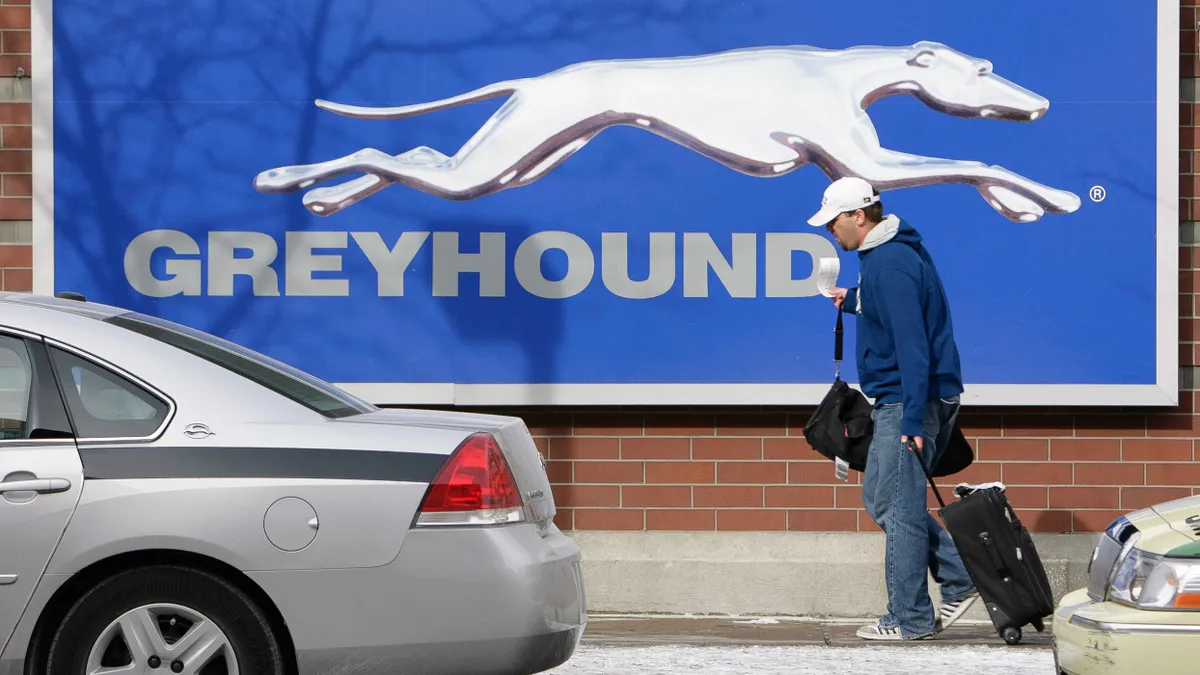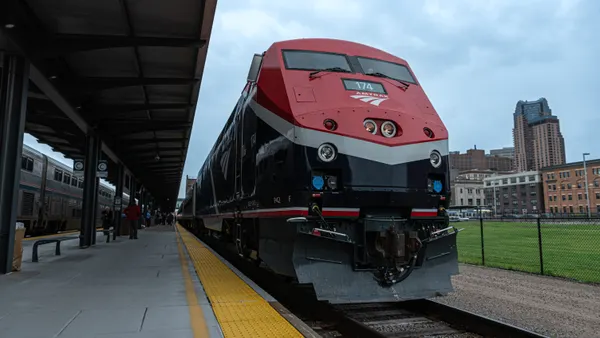Dive Brief:
- Chicago stands to lose its main intercity bus station as soon as October when Greyhound’s lease expires. This would reduce travel options for those who can’t afford other modes or those with disabilities, says a May 6 report from the Chaddick Institute for Metropolitan Development at DePaul University.
- While Atlanta, Los Angeles and New York City have planned, built or relocated intercity bus terminals in recent years, Chicago has done little to address the situation, said Joseph Schwieterman, director of the Chaddick Institute and a co-author of the report.
- “We lack regionally oriented leadership when it comes to station development, so it's all falling on the city,” Schwieterman said. But in the wake of this report, “There's signs that the city is starting to carefully explore the options,” he said, telling Smart Cities Dive that he’s been contacted by senior city leadership.
Dive Insight:
Even as ridership on intercity bus lines is estimated to have approached 90% of pre-pandemic levels in 2023, a crisis has emerged with the closures of multiple bus stations following FlixMobility’s acquisition of Greyhound in 2021. The iconic bus company’s real estate holdings, including its bus stations, were not included in the purchase.
The Chicago Greyhound station handles about half a million passengers a year, with about 75 daily arrivals and departures, the report states. In addition to Greyhound, it handles FlixBus, Barons Bus, Burlington Trailways and other bus lines.
The facility is four blocks from Chicago Union Station, which serves Amtrak and Metra, the region’s commuter railroad. A Chicago Transit Authority facility across the street from Union Station, where several CTA transit routes stop, could handle intercity buses after the Greyhound station closes, Schwieterman said. “My view is that [the] facility is underutilized. We certainly think it deserves a careful look.”
Given the few months before Greyhound’s lease on the current bus station expires, an interim solution may be necessary, Schwieterman said. That may require curbside stops, which lack amenities such as a waiting room and restrooms and can be untenable during Chicago’s harsh winters. Schwieterman believes a location at or close to Union Station would be ideal, allowing connections with Amtrak trains.
In North Carolina, Oregon and Washington state, buses supplement trains along some routes, and riders may be able to book bus tickets on Amtrak’s reservation site. Last year, Amtrak launched its first electric intercity bus on the Seattle to Bellingham, Washington, route, contracting with MTRWestern to operate the service.
The Chaddick Institute report recommends that Chicago lead an assessment of interim options to be completed by mid-June, and that the Chicago Department of Transportation take immediate action to assess the feasibility of acquiring, renovating and operating the existing Greyhound terminal. Longer term, the report asks the state government to set a goal of coordinating train and bus transfers on the ten largest intercity routes in Illinois and establish a stakeholder committee to review and plan improvements to the statewide bus network.
“We want to see our governmental agencies present analysis and options, and a commitment to become part of a solution,” Schwieterman said.













